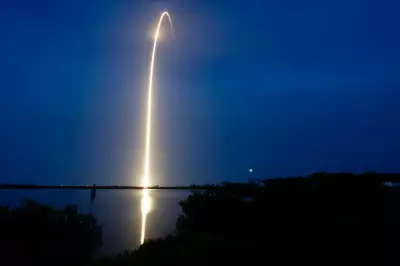
In a bold move that could revolutionise our understanding of the cosmos, NASA is preparing an extraordinary mission to chase down and study an enigmatic interstellar visitor hurtling through our solar system.
The Cosmic Pursuit: Catching an Interstellar Traveller
The American space agency is developing cutting-edge propulsion technology designed to achieve unprecedented speeds, potentially allowing spacecraft to intercept objects from beyond our solar system for the very first time. This ambitious project represents a quantum leap in space exploration capabilities.
Revolutionary Propulsion System
At the heart of this mission lies the groundbreaking 3i Atlas propulsion system, engineered to propel spacecraft at velocities previously considered unattainable with current technology. This innovation could fundamentally transform how we explore distant cosmic phenomena.
The implications are staggering:
- First-ever close-up study of material from another star system
- Potential to analyse pristine interstellar material untouched by our sun's influence
- Opportunity to understand the building blocks of planetary systems beyond our own
- Possibility of discovering entirely new forms of cosmic matter
Why This Mission Matters
Previous interstellar visitors like 'Oumuamua and Borisov passed through our solar system too quickly for detailed study, leaving scientists with more questions than answers. This new mission aims to change that paradigm completely.
"We're standing at the threshold of a new era in space exploration," explains a senior NASA scientist involved in the project. "The ability to directly sample material from another star system could provide insights we've only dreamed of until now."
The Technical Challenge
Intercepting an object travelling at interstellar velocities requires extraordinary planning and technological innovation. The mission team must calculate precise trajectories and develop propulsion systems capable of matching these incredible speeds.
The success of this mission could pave the way for future interstellar exploration and potentially even sample-return missions from objects originating around distant stars.
What Scientists Hope to Discover
- Composition of planetary systems around other stars
- Differences between interstellar material and our solar system's makeup
- Clues about the formation and evolution of planetary systems
- Potential evidence of organic molecules or other precursors to life
This daring mission represents humanity's first real opportunity to reach out and touch the stars directly, bringing us closer than ever to understanding our place in the galactic neighbourhood.





